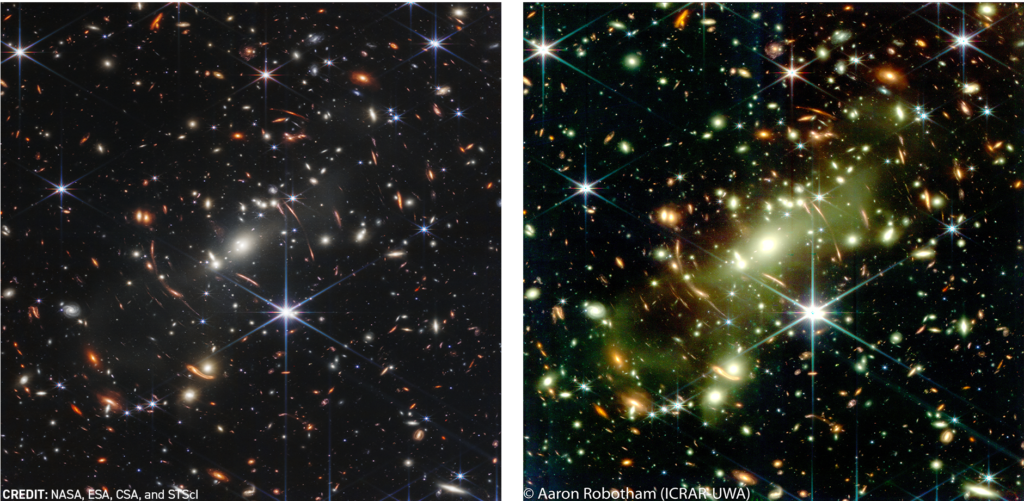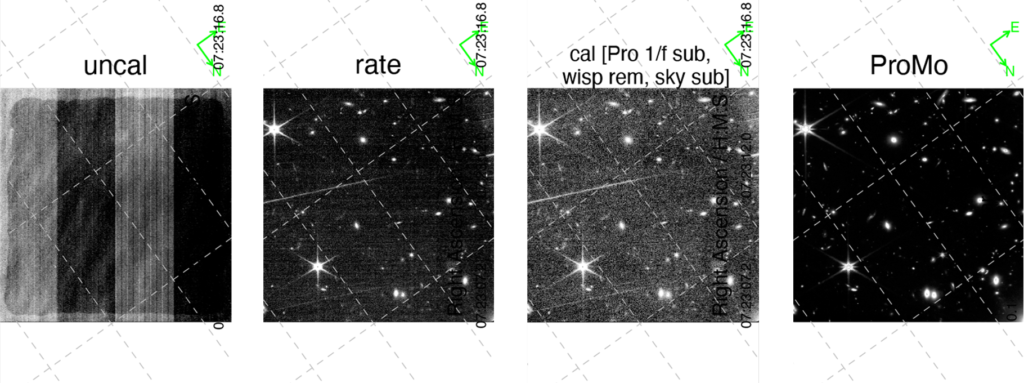Researchers at the International Centre for Radio Astronomy Research (ICRAR) have released a spectacular new render of the first James Webb Space Telescope (JWST) image.
Utilising specialised software, the new image shows the incredible capabilities of the JWST and how deeply it can search the universe.
Associate Professor Aaron Robotham from The University of Western Australia node of ICRAR, created this new version of the JWST’s Deep Field image, utilising a custom-built algorithm he created to process telescope data.
“The initial [JWST] images that came out which US President Joe Biden presented had a very short turn around,” A/Professor Robotham said.
“We had the advantage of more time to prepare and experience specifically in the task of removing sky backgrounds with the software I created 5 years ago.”
“We had that extra time, expertise and knowledge to make that data as clean as possible.”
Developing a deep sky image to take full advantage of JWST’s high level of data is a time-consuming process and is typically not done for an observatory’s initial images.
The data required several weeks of tuning the ICRAR developed software to JWST’s unique requirements before work could begin.

The image created by A/Professor Robotham allowed him to extract more image data from the JWST’s initial data. Credit: A/Professor Aaron Robotham, ICRAR-UWA © 2022
A/Professor Robotham chose to revisit the image as part of his work with JWST’s Prime Extragalactic Areas for Reionization and Lensing Science (PEARLS) project.
PEARLS is an international collaboration of universities studying galaxy assembly, active galactic nucleus growth and First Light using the JWST.
The project is headed by Arizona State University’s Rogier Windhorst with ICRAR researchers including A/Professor Robotham and Professor Simon Driver forming part of the core team.
Professor Driver, who recently received an Australian Laureate Fellowship for his work with dark matter, has been involved with the JWST telescope since its earliest days, securing over a hundred hours of observing time in anticipation of the rich quantity of data the telescope would deliver.
“These refined images allow us to dig even deeper, pushing the telescope to its absolute limit,” Professor Driver said.
“They reveal the very dimmest outer-regions of galaxies, the bridges of light torn out by gravitational tussles, as well as the very first galaxies at the furthest reaches of our Universe.”

Several examples of the processing steps taken to refine the images, from uncalibrated (left) through to wisp removal and compilation (centre right) before colour correction is processed. Credit: A/Professor Aaron Robotham, ICRAR-UWA © 2022
While A/Professor Robotham algorithm was initially designed for optical telescopes such as the Hubble Space Telescope and ground based observatories, the technology can be applied to process a much wider range of observations including next generation telescopes.
“While this process was developed for optical telescopes, it’s exciting to see how it can be used for a wide range of astronomy, including the upcoming Square Kilometre Array which will be the world’s largest radio telescope.”
ABOUT ICRAR
The International Centre for Radio Astronomy Research (ICRAR) was founded in 2009 to support Australia’s bid to host the world’s largest radio telescope, the Square Kilometre Array, representing one of the largest scientific endeavours in history.
Constituting a joint venture between Curtin University and the University of Western Australia, and proudly supported by the Government of Western Australia, ICRAR has grown into an internationally renowned, multi-disciplinary research centre for science, engineering, and data intensive astronomy, and is one of the top 5 astronomy centres in the world.
Our prize-winning team of 135 researchers from more than 32 countries includes an ARC Laureate Fellow, several ARC Future Fellows, and several Forrest Fellows.
Our Translation and Impact team works closely with industry, government, and communities to share our wealth of expertise and to help business grow.
More than half of ICRAR projects involve partnerships with international research institutions, and approximately 300 scientific papers are published annually in prestigious peer reviewed journals.
To learn more, visit icrar.org
ENDS